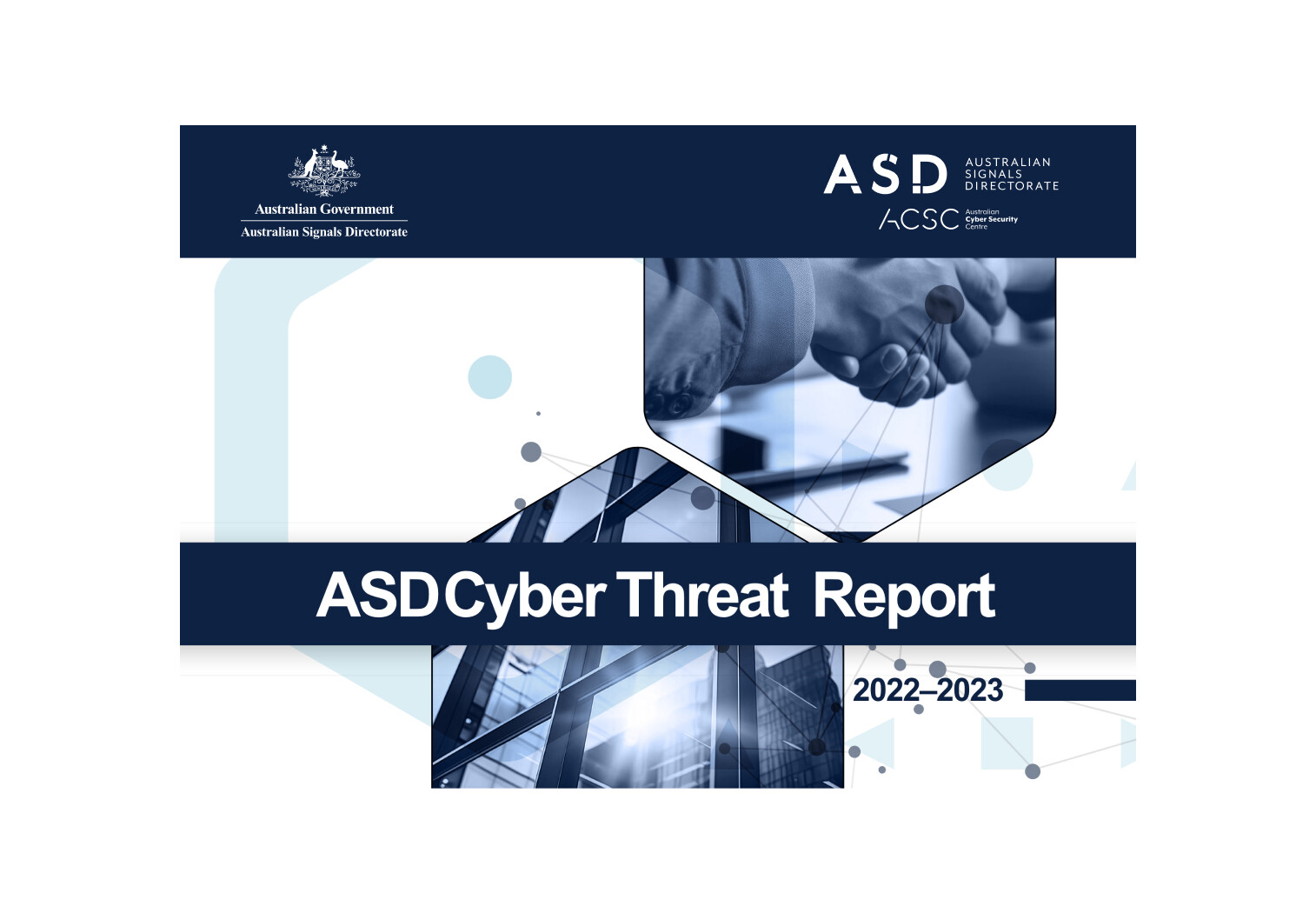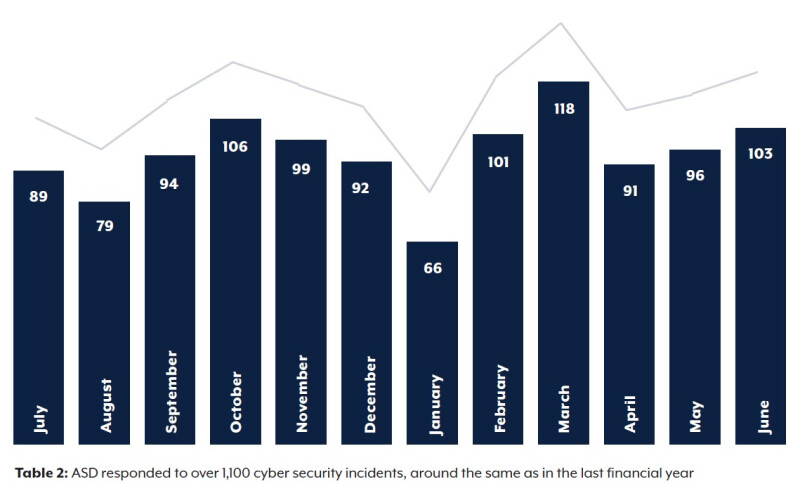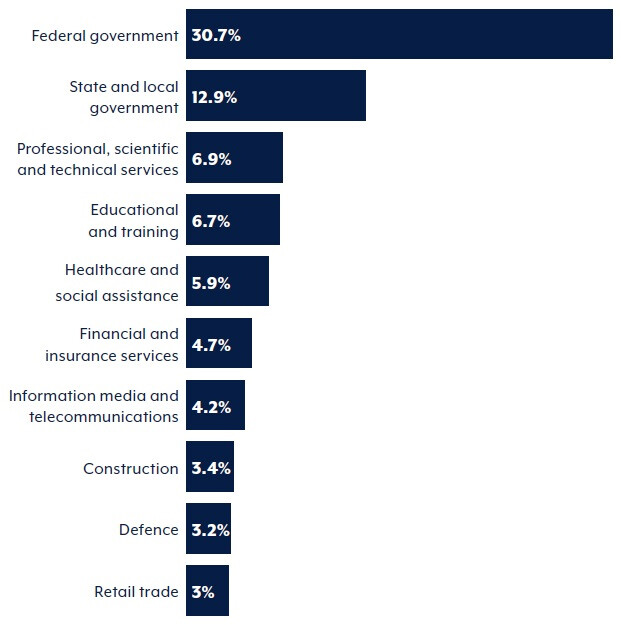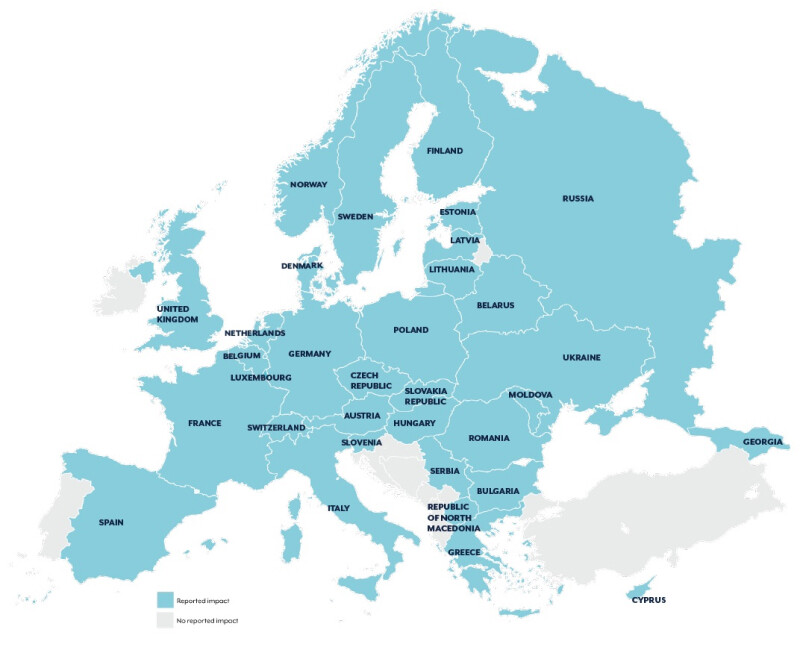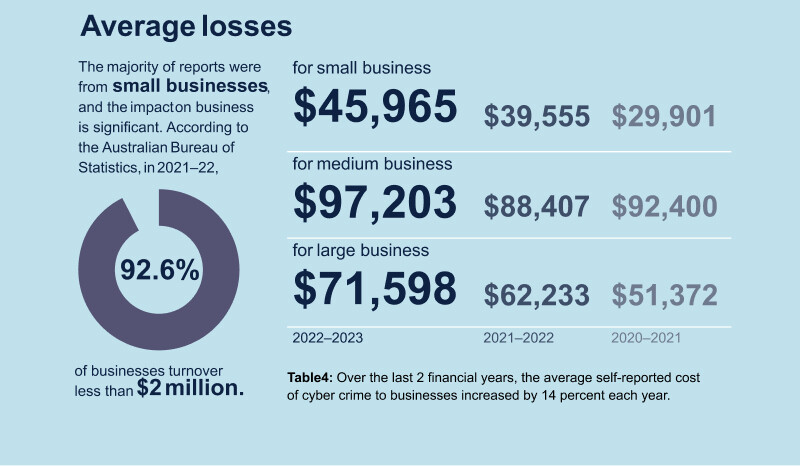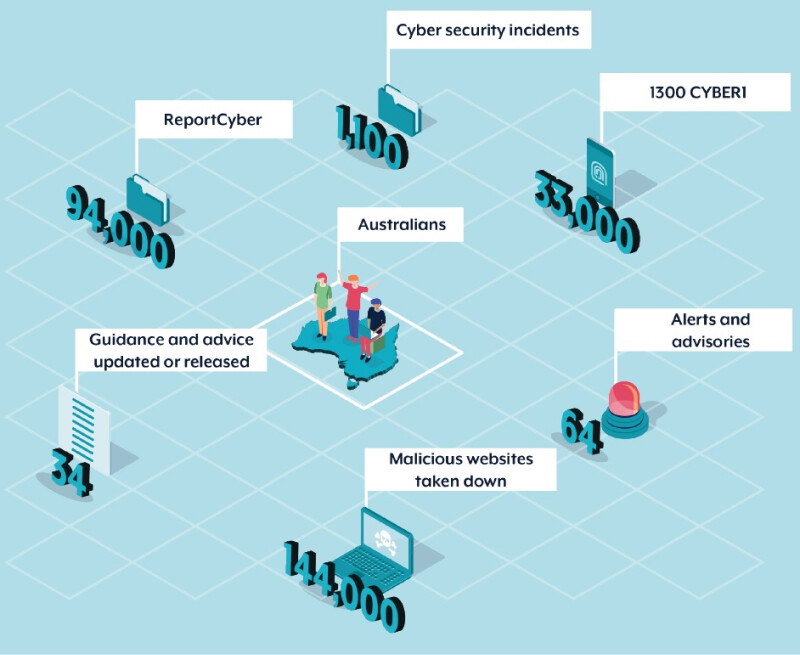In this article
In an era where digital connectivity is integral to every facet of life, from government operations to small businesses and individual consumers, the significance of cyber security has never been more pronounced. Australia, like many nations worldwide, finds itself navigating a complex and ever-evolving digital threat landscape. The Australian Signal Directorate’s (ASD) 2023 Annual Cyber Threat Report arrives as an essential beacon, shedding light on the intricate and dynamic challenges Australia faces in cyberspace.
This comprehensive report not only serves as a barometer for the nation’s current cyber security status but also acts as a roadmap, guiding the way forward amidst a sea of digital threats. It encapsulates a year’s worth of data, insights and trends, reflecting the hard realities and the resilience displayed by Australian businesses in the face of mounting cyber threats. From state-sponsored cyber espionage to the nefarious activities of profit-driven cybercriminals, the report underscores the multifaceted nature of the threats at Australia’s digital doorstep.
In this blog, we’ll delve into the key takeaways from the report, unravelling the complexities of the cyber threats Australia faces and exploring the strategic responses initiated by the Australian Signals Directorate (ASD). Our journey through this report will highlight the critical importance of staying informed, prepared and resilient in an era where cyber threats loom large over our interconnected world.
For a comparison to last year’s key takeaways, see TechBrain’s analysis of the ACSC 2022 cyber threat report.
The Current State of Australian Cyber Security in 2023
The Australian Signal Directorate’s (ASD) 2023 Annual Cyber Threat Report reveals a landscape marked by increasing complexity and intensity in cyber threats, underlining the importance of heightened vigilance and proactive defence strategies.
A Surge in Cyber Security Incidents
The fiscal year 2022-23 has been a period of intense cyber activity against Australian interests. The Australian Signals Directorate (ASD) responded to over 1,100 cyber security incidents, a statistic that starkly illustrates the gravity and frequency of the threats Australia faces in the digital domain. These incidents span a wide spectrum, from targeted attacks by state-sponsored actors to opportunistic breaches by cybercriminals exploiting vulnerabilities in systems.
The Growing Complexity of Threats
State actors are increasingly engaging in cyber espionage, targeting critical infrastructure and sensitive government data. These activities are not just about immediate gain but also involve long-term strategic positioning and intelligence gathering.
On the other end of the spectrum, cybercriminals are continually adapting their methods to exploit new vulnerabilities and maximise financial gain. From ransomware attacks that lock businesses out of their own systems to sophisticated business email compromise schemes, the methods employed are becoming more intricate and damaging.
Data Breaches Remain a Persistent Threat
Significant data breaches, most notably the Optus breach in September 22’ have resulted in the exposure of personal information for millions of Australians. These breaches not only undermine individual privacy but also pose broader risks such as identity theft and fraud. The report underscores the need for robust data protection measures and swift incident response mechanisms to mitigate the impact of these breaches.
The Patching Dilemma
One of the primary issues with patching is the need for rapid response. When a vulnerability is disclosed, the race against time begins. The window between the disclosure of a vulnerability and its exploitation by cybercriminals is shrinking and the report found one in five critical vulnerabilities were exploited within 48 hours, despite available patches. This urgency clashes with the practical realities of deploying patches across complex networks.
Organisations must navigate a landscape where the need for rapid, effective patching is balanced against practical limitations and resource constraints. The future of patch management lies in developing smarter, more efficient strategies, cultivating a security-conscious culture and leveraging the right mix of skills, automation and risk management techniques.
Key Cyber Security Trends and Threats
The report identified several worrying trends. State actors have increasingly targeted critical infrastructure, aiming for data theft and business disruption. This strategic focus poses a significant risk to national security and the economy. Concurrently, cybercriminals are evolving their tactics, causing substantial harm to Australian businesses.
Targeting Critical Infrastructure
State-sponsored actors have aggressively focused on infiltrating and disrupting critical infrastructure sectors, including energy, telecommunications and financial services. This trend represents a significant shift in the threat landscape, moving from mere data theft to potential destabilisation of crucial national assets.
These sophisticated campaigns are not only about stealing sensitive information but also about planting the seeds for potential future disruptions or sabotage, posing a profound threat to national security and public safety.
Espionage and Geopolitical Agendas
The report highlights how these state-sponsored activities often align with broader geopolitical strategies. Espionage remains a key motive, with foreign governments seeking to gain economic, political and technological advantages. The increasing interconnectivity of global infrastructure only amplifies these risks, making international cooperation essential in identifying and countering these threats.
The Rise of Ransomware
One of the most alarming trends is the meteoric rise in ransomware attacks. Cybercriminals have refined their ransomware strategies, targeting both large corporations and public sector organisations.
These attacks are not just about encrypting data; they increasingly involve threats to release sensitive information publicly, a tactic known as ‘double extortion.’ The disruption caused by these attacks can cripple essential services, leading to significant financial losses and eroding public trust.
Sophistication in Business Email Compromise (BEC)
Business Email Compromise (BEC) has evolved into a highly sophisticated form of cybercrime. Cybercriminals are now employing more advanced social engineering techniques to impersonate senior executives or trusted partners, tricking employees into transferring funds or revealing sensitive information. The financial impact of these incidents can be devastating, especially for small and medium-sized businesses with limited resources to recover from losses.
Financial Impact of Cybercrime in 2023
In 2023, the financial impact of cybercrime on Australian businesses and individuals reached unprecedented levels, underscoring a critical concern for the economy. The ASD 2023 Annual Cyber Threat Report reveals startling figures: small businesses faced an average cost of $45,965 per cybercrime incident, while medium and large businesses incurred even higher costs, averaging $97,203 and $71,598 respectively.
This escalation reflects the growing sophistication and frequency of cyber attacks, including ransomware, business email compromise and online fraud. The surge in cybercrime rates, up 23% with nearly 94,000 reports – approximately one every six minutes – amplifies the economic strain.
Additionally, the increase in the average cost of cybercrime, rising by 14%, further illustrates the expanding scope and severity of these incidents. This financial burden not only affects the immediate financial health of businesses and individuals but also has long-term implications for trust and investment in the digital economy, highlighting the urgent need for robust cyber defence strategies and increased awareness of cyber threats.
Response and Actions by the ASD
The Australian Signals Directorate (ASD) has played a pivotal role in responding to and mitigating the array of cyber threats highlighted in the 2023 Annual Cyber Threat Report. Their actions and strategies are key in maintaining national cyber security and resilience.
ASD’s international collaborative efforts, particularly in exposing significant threats like Russia’s Federal Security Service’s utilisation of Snake malware, highlight their commitment to global cyber security.
REDSPICE
REDSPICE (Resilience, Effects, Defence, Space, Intelligence, Cyber and Enablers) represents a significant strategic initiative by the Australian Signals Directorate aimed at fortifying Australia’s cyber defence capabilities. This comprehensive program is designed to enhance the nation’s ability to detect, deter and respond to an array of cyber threats.
It involves a multi-faceted approach that includes expanding cyber threat intelligence sharing, uplifting the security of critical infrastructure and reinforcing national incident response capabilities. REDSPICE is a testament to the ASD’s commitment to adapting and evolving in response to the rapidly changing global cyber landscape, ensuring Australia remains at the forefront of cyber resilience and defence.
Cyber Security Partnership Program
The ADS spearheads the Cyber Security Partnership Program creating a collaborative ecosystem by bringing together over 110,000 organisations and individuals from various sectors, including government, industry, academia, and the private sector.
Its primary aim is to facilitate the sharing of critical cyber threat intelligence and best practices, fostering a unified approach to cyber defence. This platform enables participants to gain access to vital information, tools and resources, enhancing their ability to proactively identify and respond to cyber threats.
The program underscores the importance of partnership and cooperation in the realm of cyber security, recognising that a collaborative approach is essential to effectively counter the sophisticated and evolving cyber threats of the modern world.
Advocating for Better Cyber Awareness
Central to this advocacy is the promotion of the Australian Signals Directorate’s Essential 8, a suite of strategies designed to mitigate cyber security incidents. The Essential 8 provides a foundational framework that organisations can adapt and apply according to their specific environments and risk profiles.
These strategies encompass measures such as application whitelisting, patching applications, configuring Microsoft Office macro settings, user application hardening, restricting administrative privileges, patching operating systems, multi-factor authentication, and regular backups.
By adopting these strategies, organisations can significantly enhance their resilience against a range of cyber threats, from external attacks to internal vulnerabilities. The Essential 8 not only serves as a guideline for best practices in cyber security but also underscores the importance of a disciplined, layered approach to protecting digital infrastructure.
Looking Ahead: Building a Cyber-Resilient Australia
As we look towards the future, it’s evident that building a cyber-resilient Australia is a dynamic and collaborative effort. The threats may be evolving, but so are our strategies and resources. By staying informed, proactive and united in our approach to cyber security, businesses can navigate this digital era with confidence and resilience.
By utilising TechBrain’s sophisticated cyber security capabilities developed by in-house specialists committed to our national cybersecurity, you can enhance your business’s cyber security posture and face digital threats head-on.
